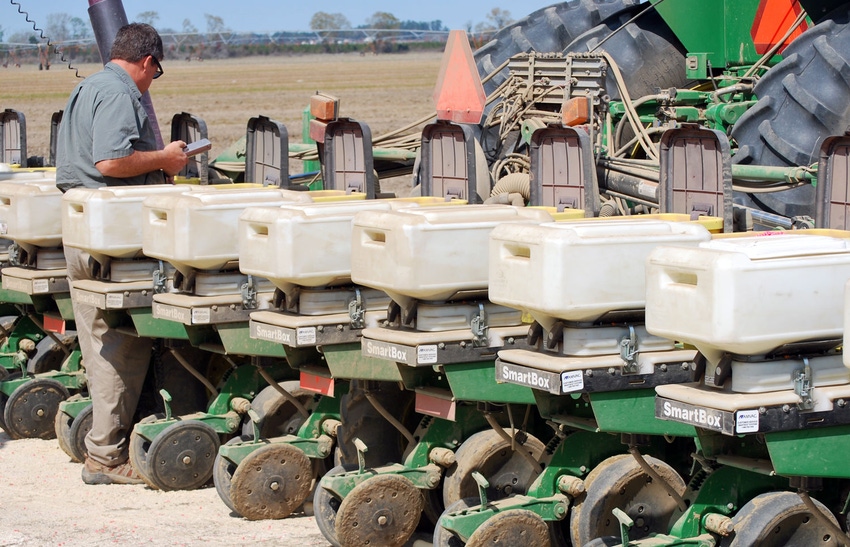
With winter production meetings, Extension delivers research-based, nonbiased recommendations to growers. Presentations focus on giving the best opportunity for a profitable crop through sound decisions in variety selection, pest management, general crop production and adoption of technology.
Precautions taken to limit the spread of Covid-19 have meant substantial changes to our standard winter meetings. Knowing that some were unable to attend our virtual meetings, I asked my buddies on the UGA Cotton, Peanut, Corn and Soybean Teams to give the most important take-home messages from their presentations. Just like Joe Friday, "Just the facts ma’am." Here are their responses:
Peanut Agronomics- Dr. Scott Monfort
Seed quality is essential. Be sure to inquire about the % germination of the seed you are buying. It is imperative that seed is stored properly and to avoid high temperatures and humidity in storage. The first seed planted should be the first seed received at the buying point and/or on the farm. Seed should be handled carefully, as if, Dr. Monfort says, “it’s your newborn baby”.
Make smart decisions at planting. These include planting into good soil moisture and temperature, avoiding planting too fast, do not plant more than 7 seeds in single row and 8 seeds in twin rows, and minimize emergence problems and stand loss, do not use in-furrow fertilizers.
Cotton Agronomics- Dr. Camp Hand
All varieties included in UGA on-farm variety trials in 2020 were considered to be the “best of the best” by their respective companies. Growers should note that varieties often perform better in some environments and not as well in others.
In selecting a variety, growers should pay close attention to consistency across a wide range of environments, especially noting how often a variety yielded above the trial average. The top 6 varieties evaluated in 2020 yielded above the trial average over 50% of the time.
Corn Agronomics- Dr. Corey Bryant
Avoid planting too early. Planting beyond the optimum window, for any crop, will reduce yield, but rushing to get your crop planted increases risk to damage from adverse weather.
Optimize all management practices. High yields result from properly managed systems, not from high fertilizer inputs alone. Money is wasted if, in addition to soil fertility, focus isn’t on proper irrigation and timely pest management (weeds, insects, diseases, and nematodes).
Soil Fertility- Dr. Glen Harris
For corn, fertilize N-P-K by yield goal. Starter fertilizer placement in a 2 x 2 is preferred over in-furrow.
In cotton, the two most important things on soil tests are pH and potassium. Watch for “false high” readings when measuring soil pH in water (private labs) vs. salt (UGA lab). Do not apply potassium too late. Split applications have not proven to be effective.
Low soil pH is the number one fertility issue in peanut. Grid sampling and variable rate liming can drastically reduce soil pH problems.
Insect Management- Dr. Philip Roberts, Dr. Mark Abney and Dr. Dave Buntin
Understand RISK of insect pests and manage to minimize RISK of damaging insect pest infestations.
Scout crops carefully for insect pests and beneficial insects. Use thresholds and base management decisions on accurate information from the field. Be prepared to react in a timely manner with an effective insecticide when, and if, needed.
Weed Management- Dr. Eric Prostko and Dr. Stanley Culpepper
Follow the UGA weed control program as follows: A) Start clean using cover crops/tillage/herbicides; B) Use narrower row-spacings when possible; C) Use multiple residual herbicides; D) Make timely POST applications when the biggest weeds in field are 3” or less; and E) Hand-weed escapes to prevent seed production.
Many herbicide-related problems are self-inflicted by the grower and can be avoided by slowing down and paying greater attention to detail to avoid costly mistakes.
Disease and Nematode Management- Dr. Bob Kemerait
Remember that your opportunities to “best manage” nematodes and a number of diseases to include Tomato spotted wilt, Fusarium wilt, Aspergillus crown rot, CBR, seedling disease, and bacterial blight, end when the furrow is closed at planting.
Peanut, cotton, corn, and soybean crops are susceptible to diseases throughout the season. Care should be taken to use the best product at the right time; stay the course!
Irrigation- Dr. Wes Porter
Irrigation timing is more critical than total amount applied.
Find an irrigation scheduling method that works for you to aid in appropriate timing. Over-irrigation of cotton and peanuts can result in yield reductions. Terminate irrigation on cotton at, or near, 10% open boll to avoid yield loss.
Precision Agriculture- Dr. Simer Virk
Use precision soil sampling techniques (grid or zone based) to understand soil pH and nutrient variability within the fields. Implement variable-rate lime and fertilizer applications to addresas soil nutrient variability.
Use basic precision ag technologies (seed monitor and rate and section control for spraying) to improve precision and application accuracy of inputs. Use a monitor to understand spatial yield variability within fields and adjust management practices to maximize productivity across the whole field.
Hopefully we will be able to meet in person for winter meetings in 2022. However, until that time, Extension is here to assist growers across the Southeast. Our 2021 UGA presentations are available now through your local Extension office and will soon be available on-line.
Just the facts, ma’am.
About the Author(s)
You May Also Like






